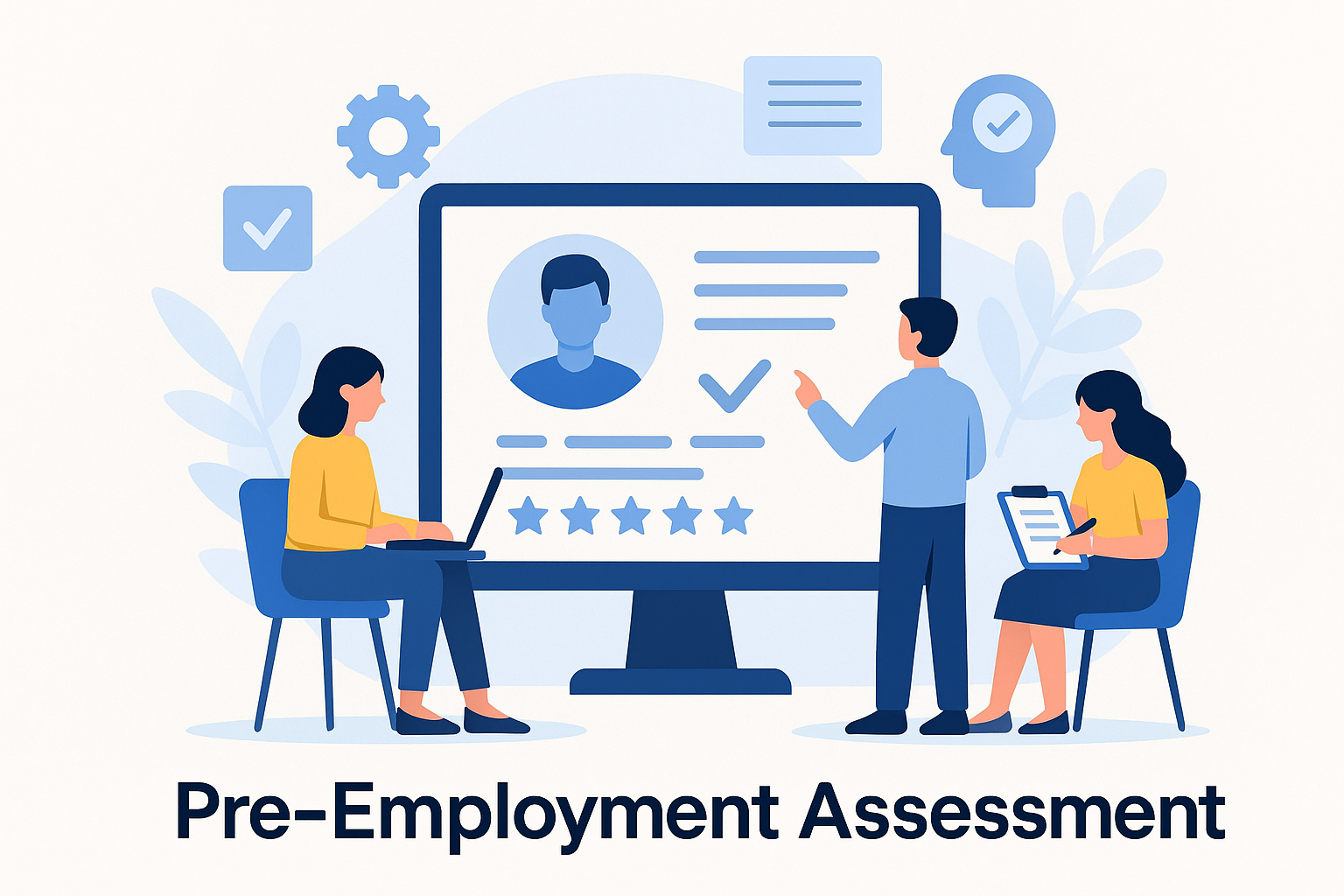What is a Pre-Employment Assessment? | HR Glossary
What is a Pre-Employment Assessment?
Pre-Employment Assessment refers to a set of standardized evaluations used during the hiring process to measure candidates' skills, abilities, personality traits, and suitability for a job role before making a final hiring decision.
Assessments can vary widely, ranging from cognitive ability tests to personality questionnaires, and provide deeper insights into a candidate’s potential than resumes and interviews alone.
Why are Pre-Employment Assessments Important?
Organizations use pre-employment assessments to:
Predict Job Performance: Assessments can accurately forecast how candidates will perform.
Enhance Hiring Accuracy: Provide objective data alongside interviews.
Reduce Employee Turnover: Better matches lead to longer retention.
Elevate Candidate Quality: Highlight top performers early in the process.
Support Inclusive Hiring: Reduce unconscious bias through standardized testing.

Types of Pre-Employment Assessments
Cognitive Ability Tests: Evaluate logical reasoning, problem-solving, and learning agility.
Skills Assessments: Measure job-specific technical or soft skills.
Personality Assessments: Analyze work style traits and cultural fit.
Emotional Intelligence (EQ) Tests: Assess self-awareness and interpersonal skills.
Situational Judgment Tests (SJTs): Present hypothetical job scenarios to assess decision-making.
Job Simulations: Replicate real-world tasks candidates would perform.
Best Practices for Using Pre-Employment Assessments
Align with Job Requirements: Select assessments that mirror the skills and competencies needed.
Use Validated Tools: Ensure assessments are scientifically reliable and unbiased.
Communicate Expectations: Explain the purpose and process clearly to candidates.
Balance Multiple Data Points: Combine assessments with interviews and reference checks.
Analyze Outcomes: Review the effectiveness of assessments periodically.
Stay Legally Compliant: Ensure all tools meet legal and ethical hiring standards.
How Pre-Employment Assessments Fit into the Hiring Process
Pre-employment assessments are typically used after initial screening and before final interviews. Their role is to:
Strengthen Screening: Help narrow the candidate pool based on demonstrated abilities.
Enhance Interviews: Provide deeper insights to tailor interview questions.
Guide Hiring Decisions: Support more confident and objective offer-making.
Inform Onboarding: Highlight strengths and development areas for new hires.
FAQ About Pre-Employment Assessments
Q1: Are pre-employment assessments legally allowed?
Yes, as long as they are job-relevant, non-discriminatory, and applied consistently.
Q2: How much time should a pre-employment assessment take?
Ideally, they should be kept under 60 minutes to avoid candidate fatigue.
Q3: Can candidates prepare for these assessments?
Preparation is possible for skills-based tests, but cognitive and personality assessments typically measure innate abilities.
Related Terms You Might Find Useful
HR Glossary: Master the Language of Modern HR
Explore More: Discover how MokaHR supports pre-employment assessments through seamless ATS integration and customized candidate workflows. Request a Demo today!
Final Thoughts
Incorporating pre-employment assessments into your hiring process allows organizations to make more data-driven, equitable, and effective hiring decisions. By investing in proper assessment tools, companies can ensure stronger teams and better long-term outcomes.
From recruiting candidates to onboarding new team members, MokaHR gives your company everything you need to be great at hiring.
Subscribe for more information

